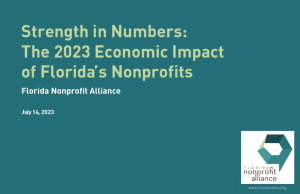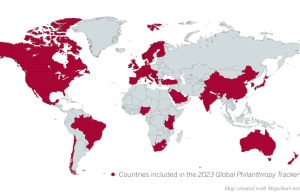The novel coronavirus, COVID-19, has changed the world like nothing else during this century. Even compared with SARS in 2003, Ebola in 2014-2015 or the “Great Recession” of 2008-2009, the effects on social interactions and economy caused by COVID-19 have been unprecedented. The responses from nonprofits must continue to be equally unprecedented.
Colleges and universities have made very difficult decisions about how to deliver instructional content to students — selecting and toggling among live, remote and/or hybrid course modalities. Cultural organizations have experienced an almost total loss of revenues from in-person visitors. Religious organizations have been unable to hold in-person gatherings. Social service organizations have been forced to contend with the challenges of delivering their missions, carefully weighting safeguarding personnel while trying to meet an increasing and seemingly insatiable demand for services.
Government relief programs have provided some assistance, but continued dependency on such funding is presently in doubt, and the extent of support offered, to date, has been inadequate. COVID-19 has challenged nonprofit leaders’ abilities to deliver on mission in ways not previously contemplated. As of this writing, the pandemic is not showing immediate signs of letting up. Its future strains and effects on the economy are difficult to model and assess.
As the world looks forward to the eventual abating of the pandemic, attention will turn to stoking and stabilizing the economy to boost a recovery. In the meantime, it is prudent to begin now to prepare for the post-pandemic recovery to be well positioned to sustain operations and refocus on mission delivery.
As your organization continues through the current operating norm, prepare for post-pandemic recovery by evaluating five critical areas:
— Governance
— Risk management
— Budget and forecasting
— Liquidity
— Human capital
Flex, Evolve Governance Structures
Many nonprofit leaders during the early weeks of the pandemic were forced to expeditiously establish crisis management teams. First and foremost, organizational staff needed to inventory and triage the myriad needs and risks confronting their institutions. Due to the velocity at which the operating environment was morphing, most did not have the time to carefully weigh and model which action items were best.
Leaders and staff had to quickly flex and evolve their governance structures and reporting lines to allow boards and management teams to move with great speed and agility to abate the crisis. Governing documents, including bylaws and committee charters, suddenly seemed too rigid and officious, not allowing for the reaction time required.
Review your crisis management plans and governing documents, including the composition of your crisis management team, and the protocols and checklists to shut down and restart operations, safely and timely. Perform a skills inventory of your current board and committee member complement to ensure you have the right individuals to impart the knowledge to guide future activities and action items. Skill sets needed will likely include medicine/healthcare, real estate, finance, HR, risk management, IT and turnaround.
Update Risk Management, Apply Learnings
Nonprofits generally lag behind their commercial counterparts in the development of mature enterprise risk management (ERM) processes that are flexible, ever expanding and responsive to evolving complexities. If your organization is more advanced on the ERM journey, now is the time to update your risk register, applying the learnings from the past year.
Determine whether your business continuity plans are adequate, where flagrant gaps exist and which nascent risks were unexpected and difficult to mitigate. Well-designed ERM plans include an assessment of operations, people, IT, treasury functions, protecting stakeholders/program constituents, communicating with staff and protection of physical assets, among many other areas of considerable import. The adequacy of insurance policies should similarly be reviewed and renegotiated to better protect the organization — specifically, contracts that include a force majeure clause limiting coverage. Evaluate your vendor relationships, business partners and advisors to ensure you are prepared for the challenges and have adequate procedures to respond to the effects of the pandemic (or the next inevitable crisis).
The inability of many third-parties to perform under existing contract arrangements was a significant factor leading to the strains. In the post-pandemic world, it will be paramount to both sure up critical supply chains and strengthen relationships among peer institutions/networks to better ideate and collaborate.
Adjust Budget, Forecasting
We’ve learned to work individually, collaborate as teams virtually and deliver on mission in new and innovative ways. It’s been impressive. Virtual learning, video meetings and telehealth have become prominent parts of our daily routines and will remain so, at least for the foreseeable future. It could be said that we were experiencing, practicing and perfecting these technologies for the past several years, preparing for their eventual use every day. After our respective geographies “open up,” you’ll need to further analyze and optimize these technologies.
Most organizations have seen dramatic reductions in cost areas including travel, meetings and related ancillary activities, leading to positive impacts on budgets and performance. In the wake of the pandemic, many nonprofit managers are developing budgets using a zero-based approach. The stark intensity of the pandemic has caused many leaders to become introspective, granting them permission to challenge certain activities, cost structures and operating norms.
For example, previously dedicated administrative space is being repurposed into programmatic space. Take this opportunity to reflect on your business processes and related IT systems, reprioritize your capital budget and invest in new technologies necessary to accommodate work modalities different from historical ones.
This is also the ideal time to review reserves management and determine whether the policies previously established have been effective in navigating and reacting to this crisis, or if there is a need to reevaluate your risk appetite and restructure reserves accordingly. Drill down further into programs to better understand programmatic margin, ensuring they are fully burdened with relevant cost allocations to arrive at full costing. Conduct an assessment of their overall effectiveness and alignment with mission.
Using forecasting tools that have been enhanced and designed to be nimble, you can refine key assumptions and desired outcomes based on evolving inputs. This will allow you to model varying operating characteristics responsive to new operating norms.
Analyze Liquidity Strains For Responses
One of the most profound and immediate impacts of the pandemic on nonprofits was strain on liquidity. Strategies to ensure a sustaining and healthy cash position include reductions of nonessential costs, furloughs of employees or cutbacks of headcount or salaries, and aging payments to suppliers and vendors. These strategies were countered by diminished receivable collections from constituents, donors and granting agencies, as well as reduced draws from investment portfolios.
Additional reductions of cash receipts were caused by closing revenue-producing facilities to members, visitors and students, and canceling special events. Refunds for unsatisfied performance obligations were also required, in certain circumstances, further burdening available cash reserves. With fixed cost payments, debt service, and contract obligations still in force and looming, finance managers drew on available lines of credit to bolster cash balances. Given the design of certain investment policy statements, some organizations were hamstrung to access cash from their investment portfolios because portfolio designs did not allow for the timely liquidation of some asset classes.
As the immediacy of the liquidity crisis has passed, evaluate the levers available to manage and buttress liquidity, and respond accordingly. Your analysis should include a review of credit facilities and the need to expand the availability of draws under such lines, or the liquidity provided by investment portfolios and whether an adjustment to the composition of the design of the portfolio is warranted, allowing for increased liquidity.
Evaluate, Address Human Capital Impacts
Most nonprofits are not dealing with products. Deliveries to constituents are programs provided by their most important asset — their people, who must be protected. Unfortunately, many employees were furloughed during this difficult time, without a formal policy to do so. Some offered voluntary separation programs, rather than simply reducing headcounts. Consider formalizing established policies so if they need to be activated in the future, they will be more readily available and structured.
Similarly, evaluate code of conduct policies and modify them to address the impacts of a remote workforce. You might need to re-evaluate benefit offerings and make enhancements to assist employees in coping with COVID-19’s mental health impacts.
Positioning Recovery, Sustainability
There was no one-size-fits-all approach to responding to the early, immediate impacts of the pandemic, and there is no certainty around what the future holds. Organizational leaders have to adopt a mindset that allows for greater flexibility and speed to pivot quickly to sustain operations and continue mission fulfillment.
Learn from what has come to pass and implement appropriate measures to position your organization for post-pandemic recovery and sustainability.
*****
Edward Miller is a partner, Audit Services, Not-for-Profit and Higher Education Industry Practices, at Grant Thornton LLP. His email is [email protected]. Dennis Morrone is national managing partner, Not-for-Profit and Higher Education Industry Practices at Grant Thornton LLP. His email is [email protected]









